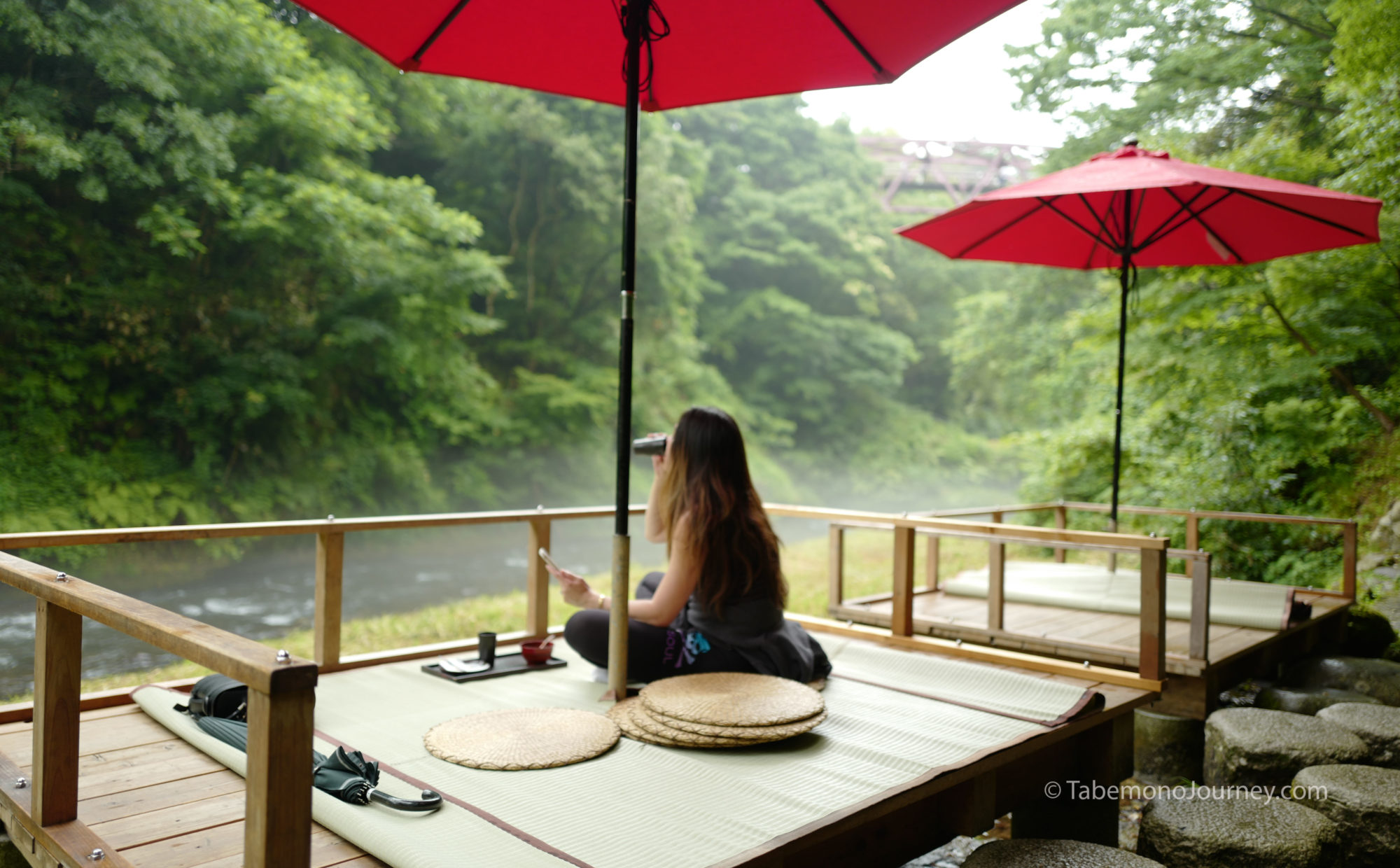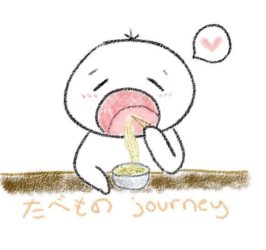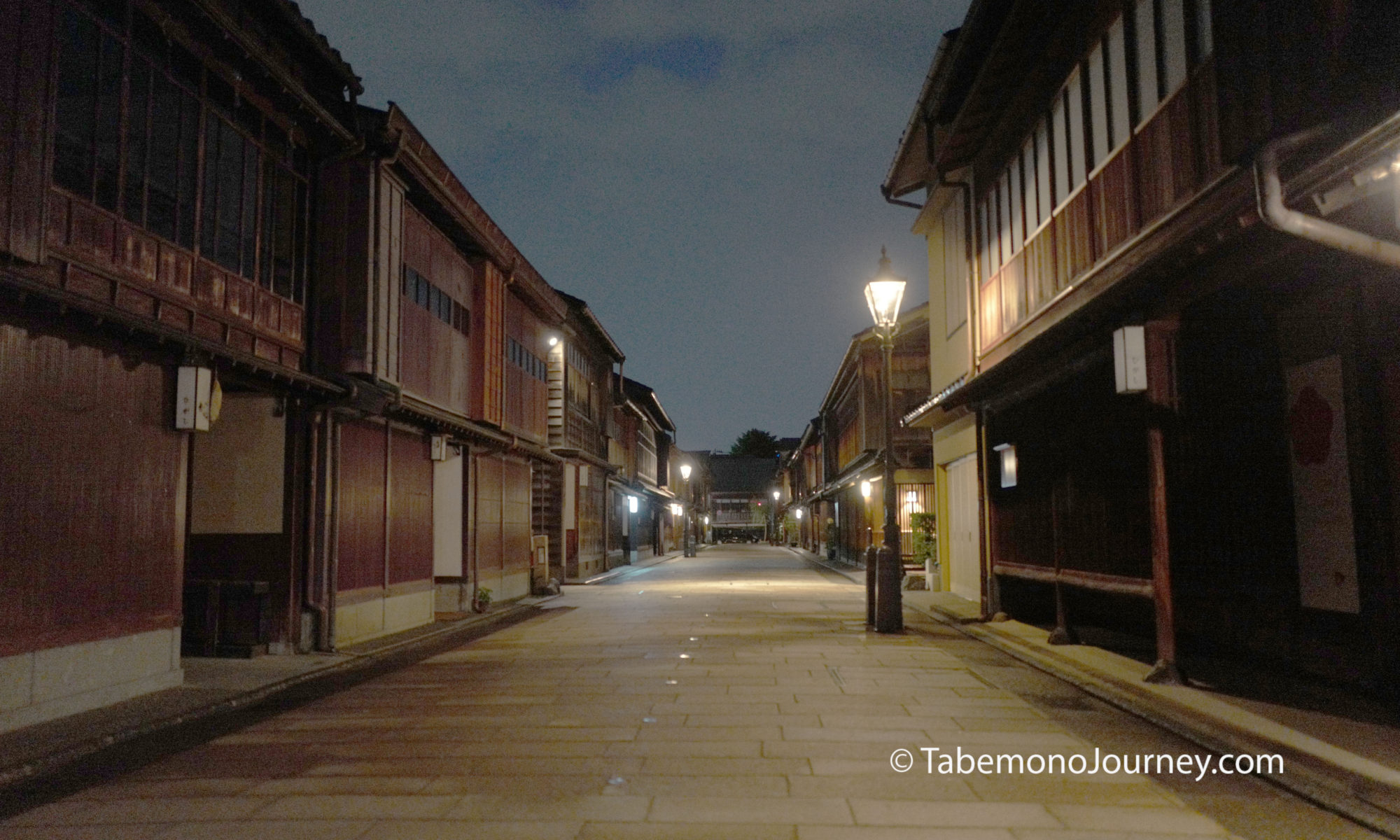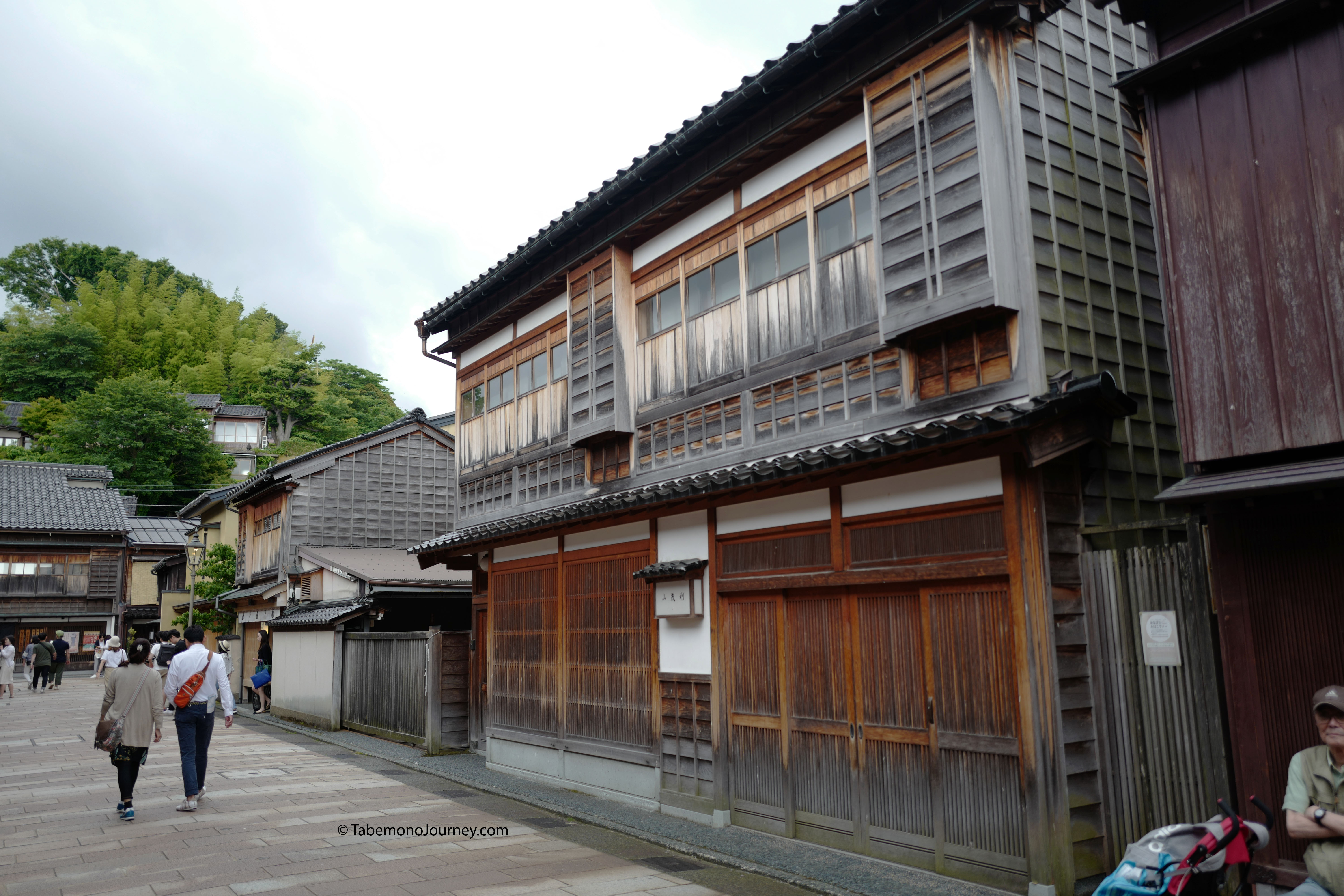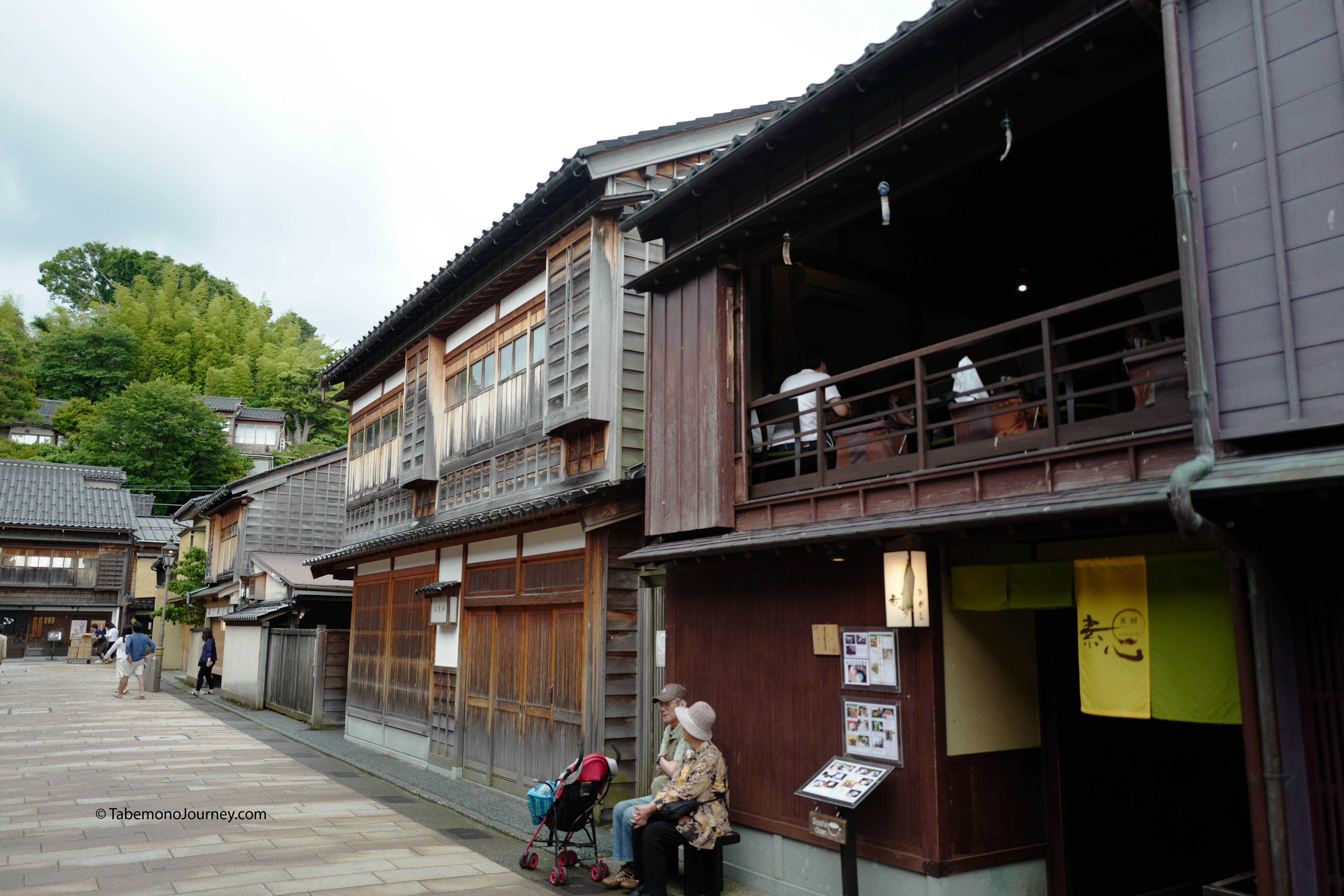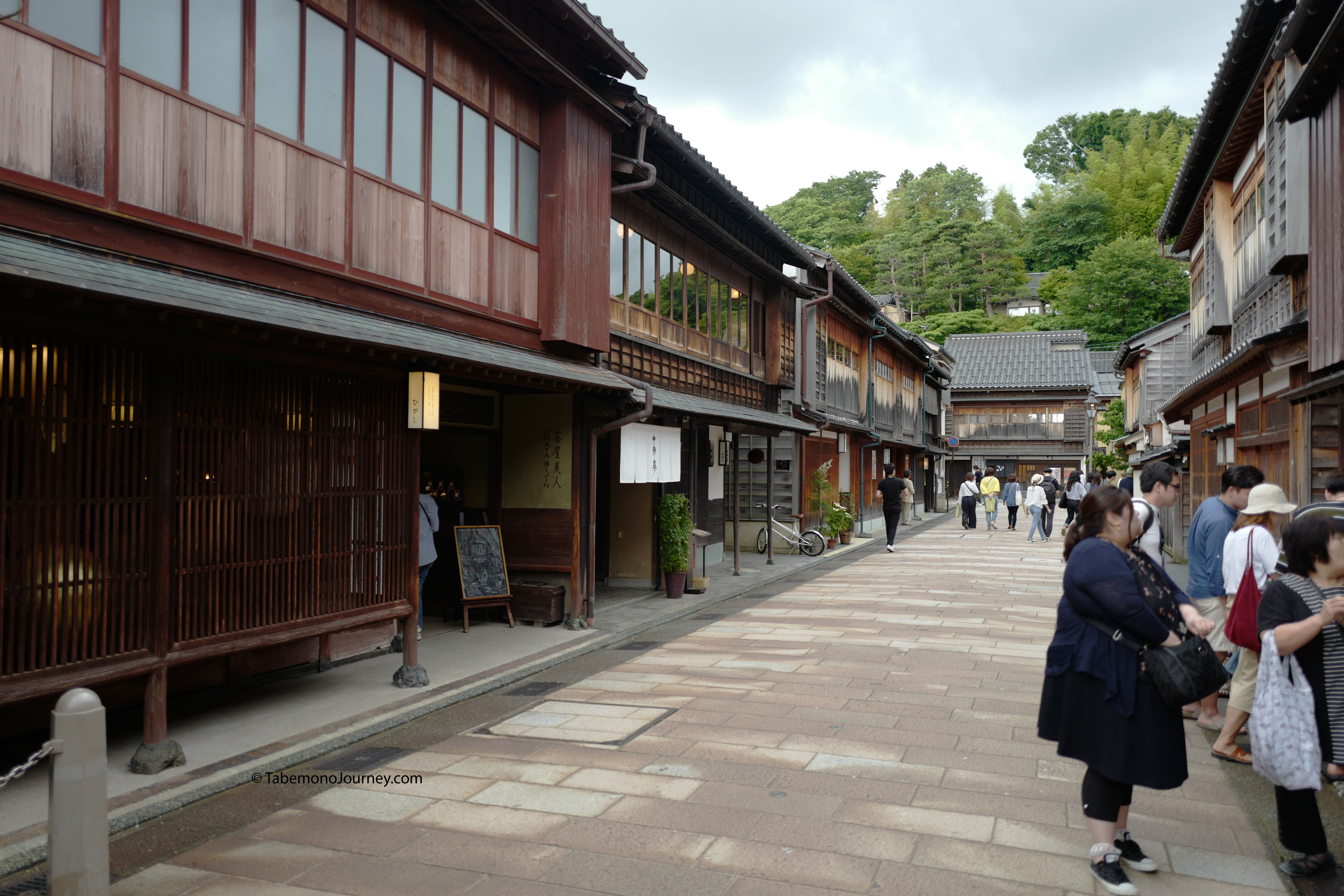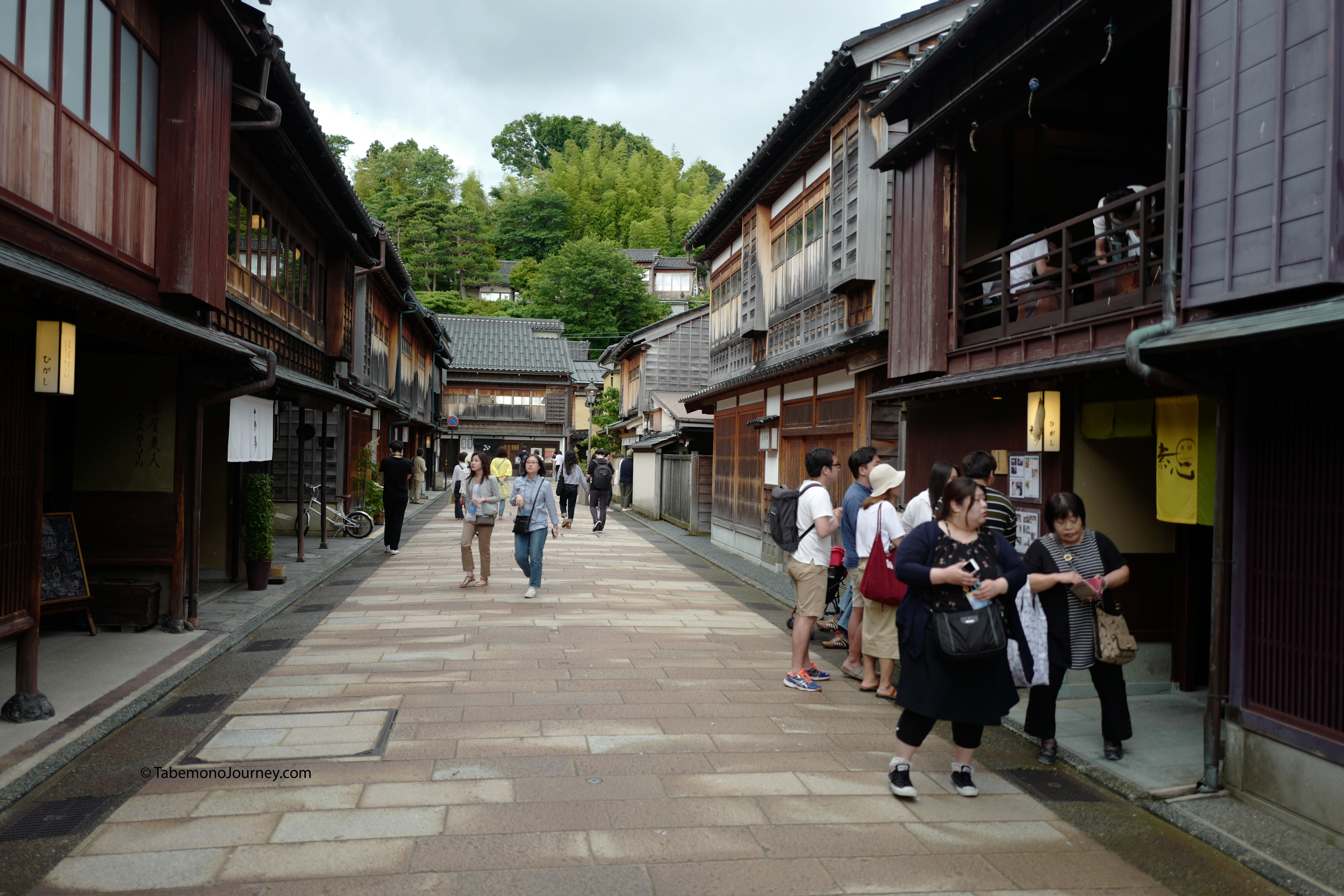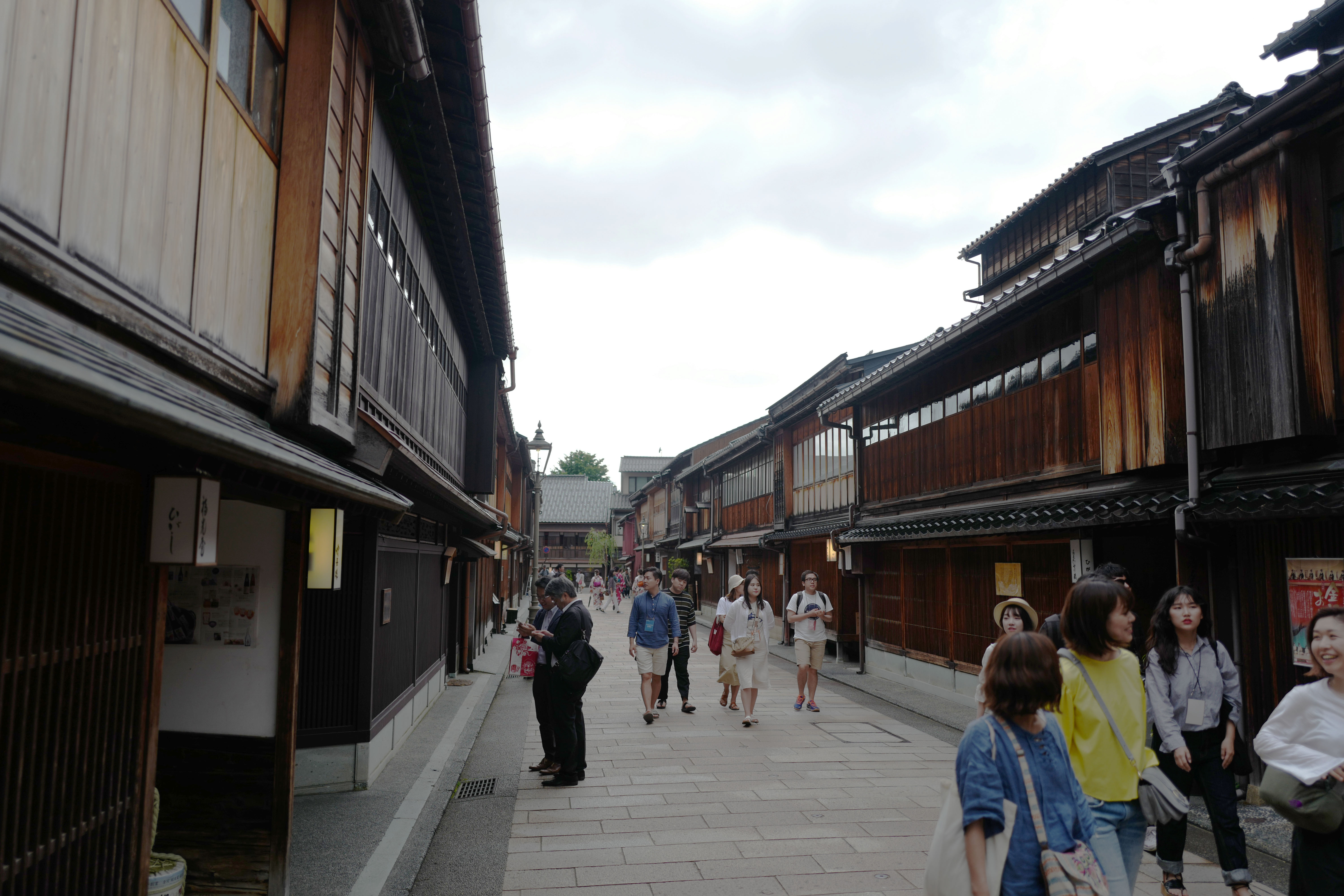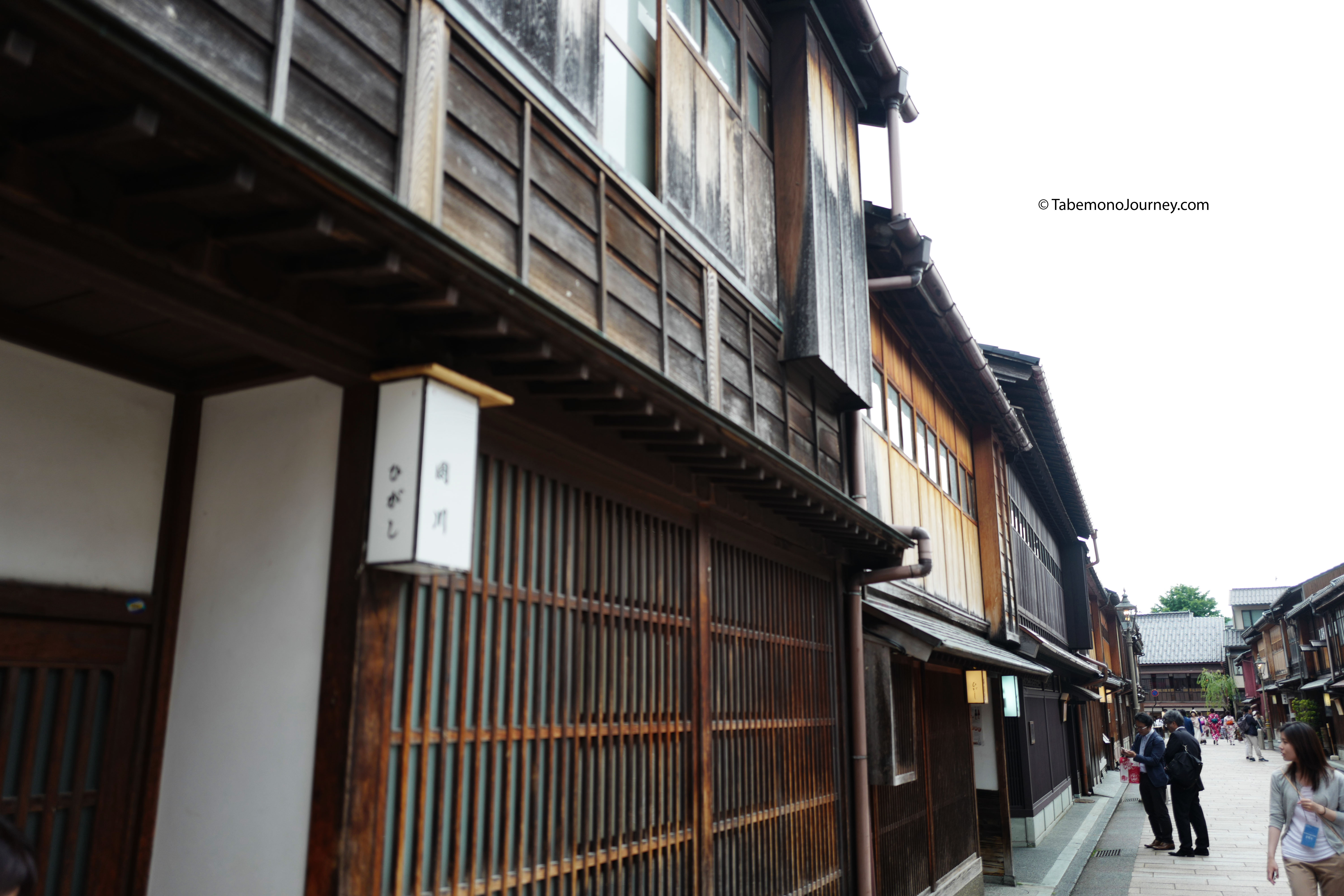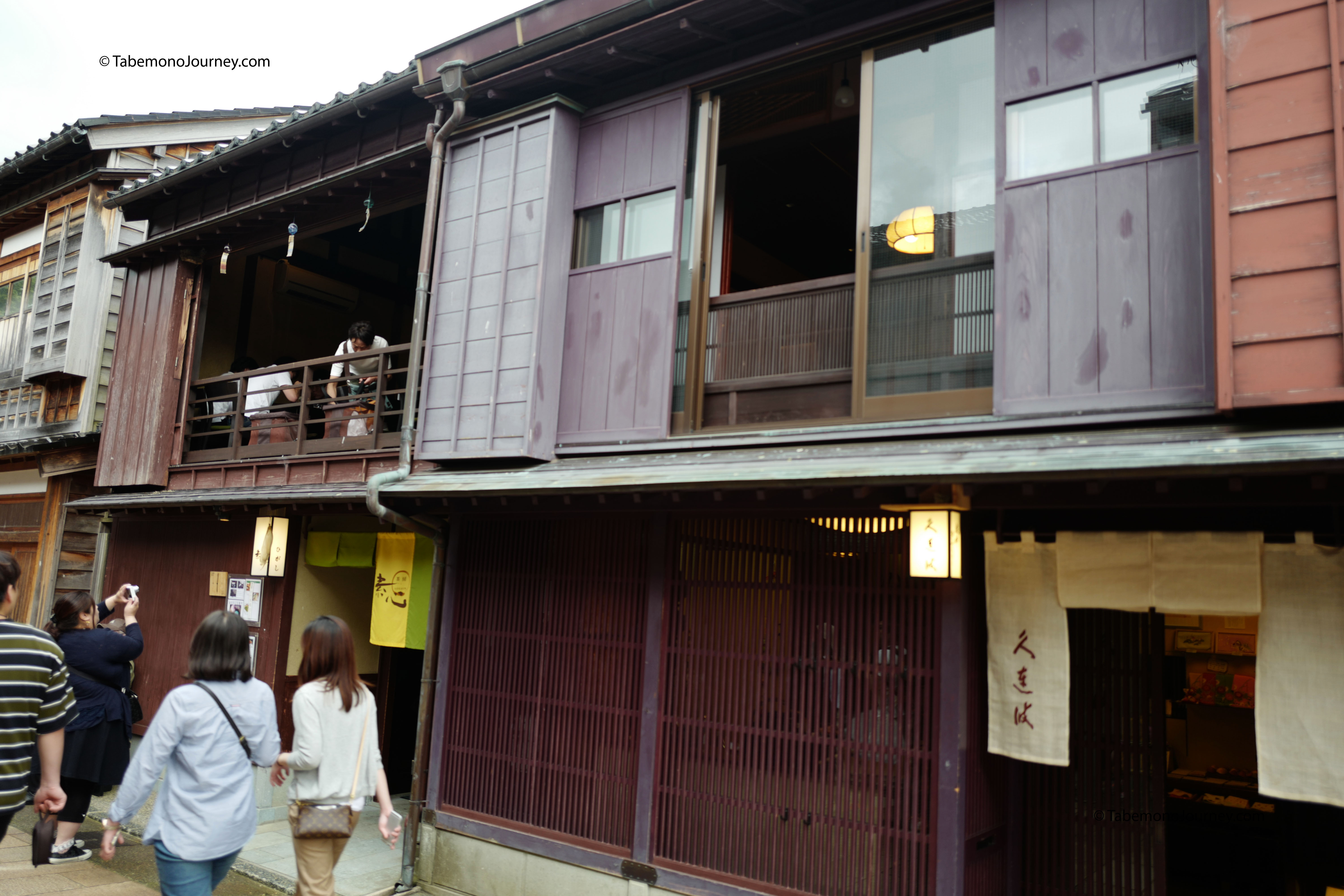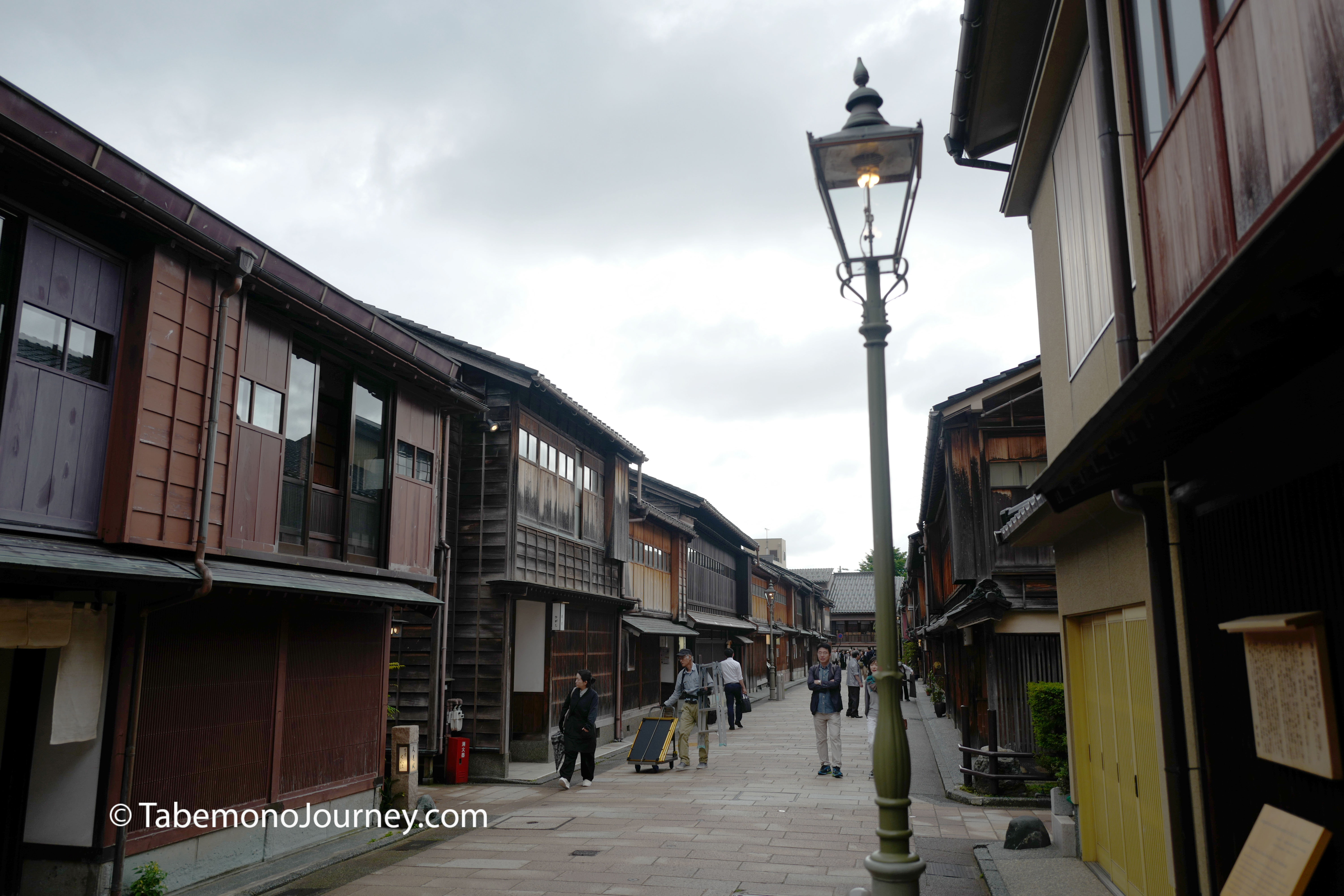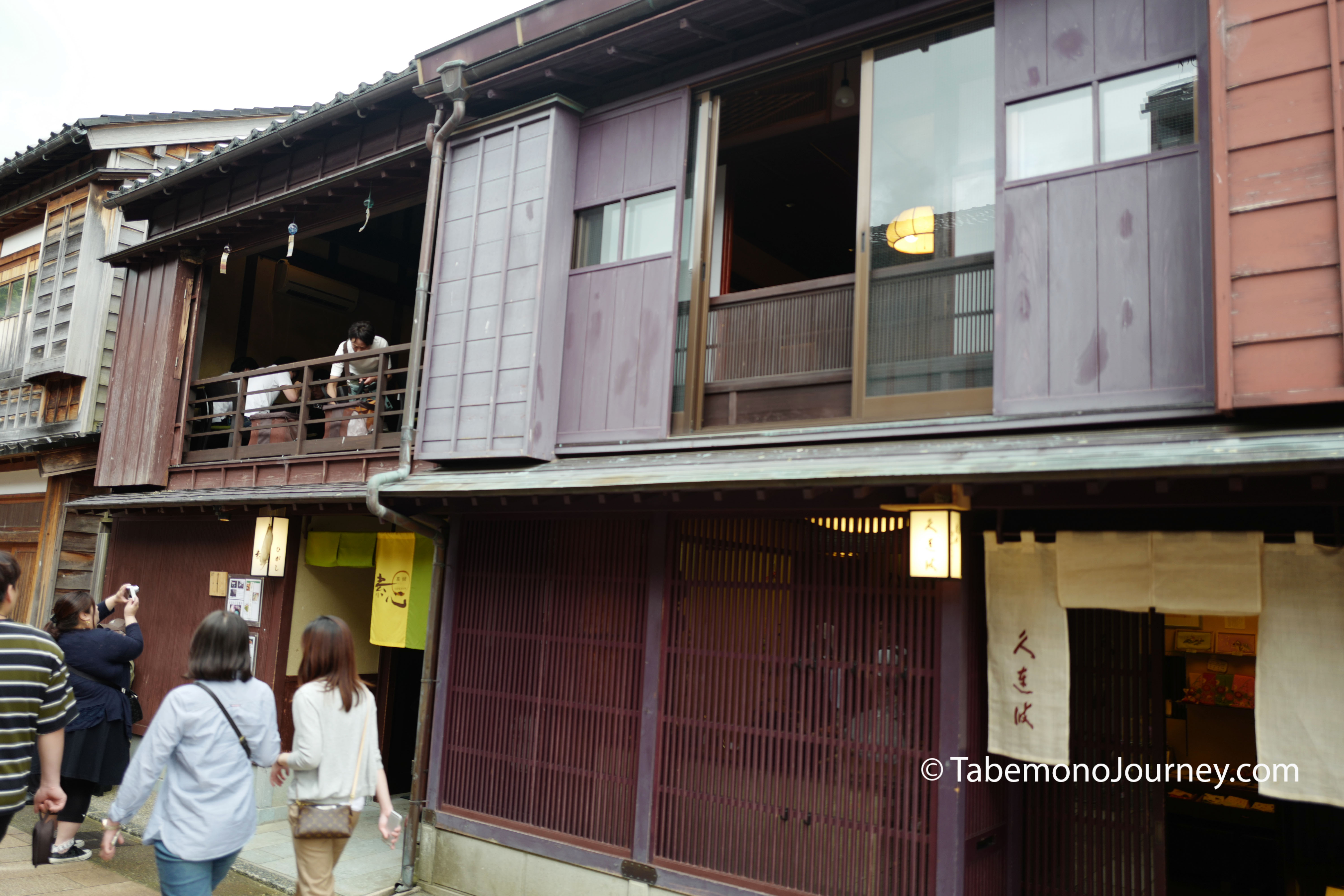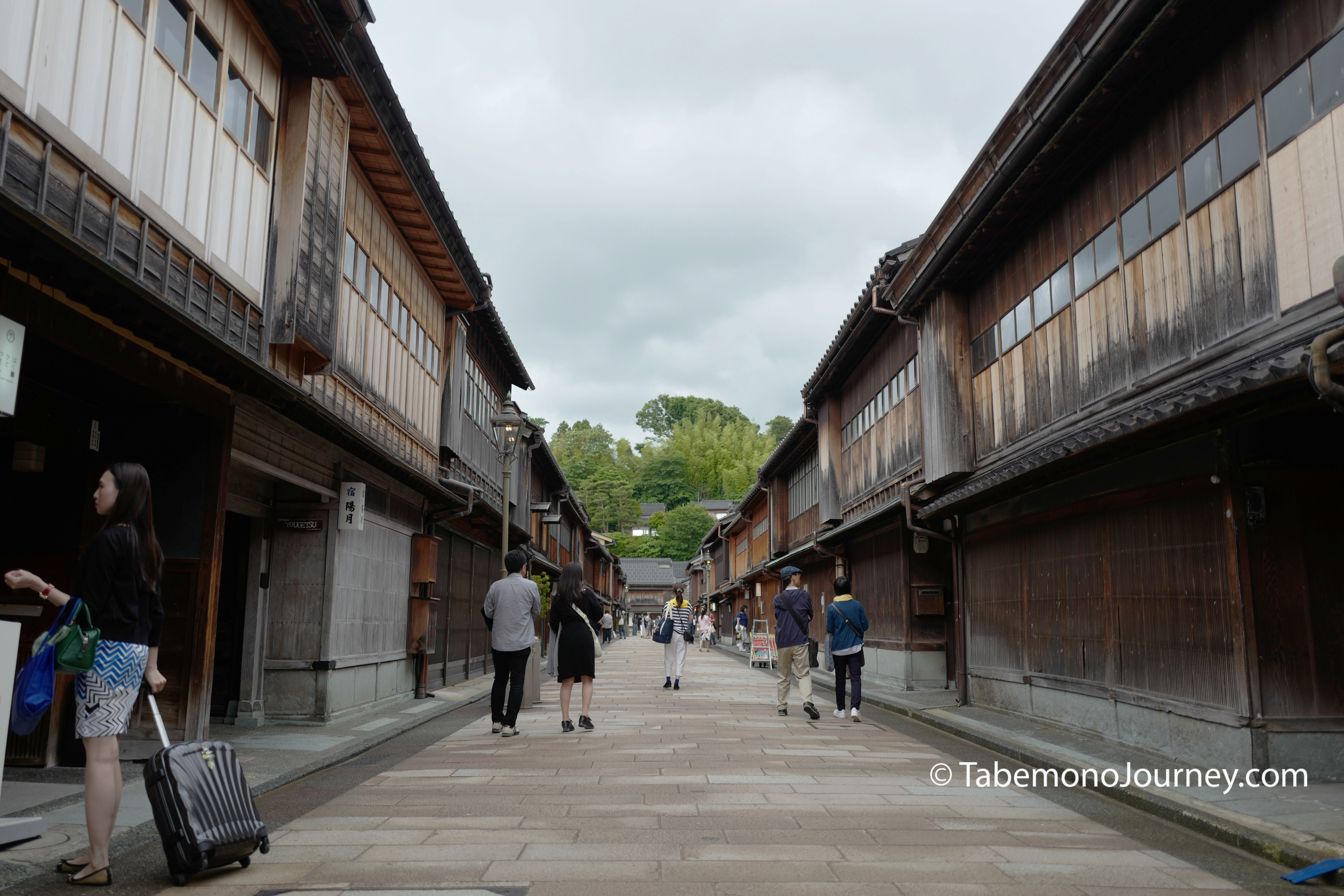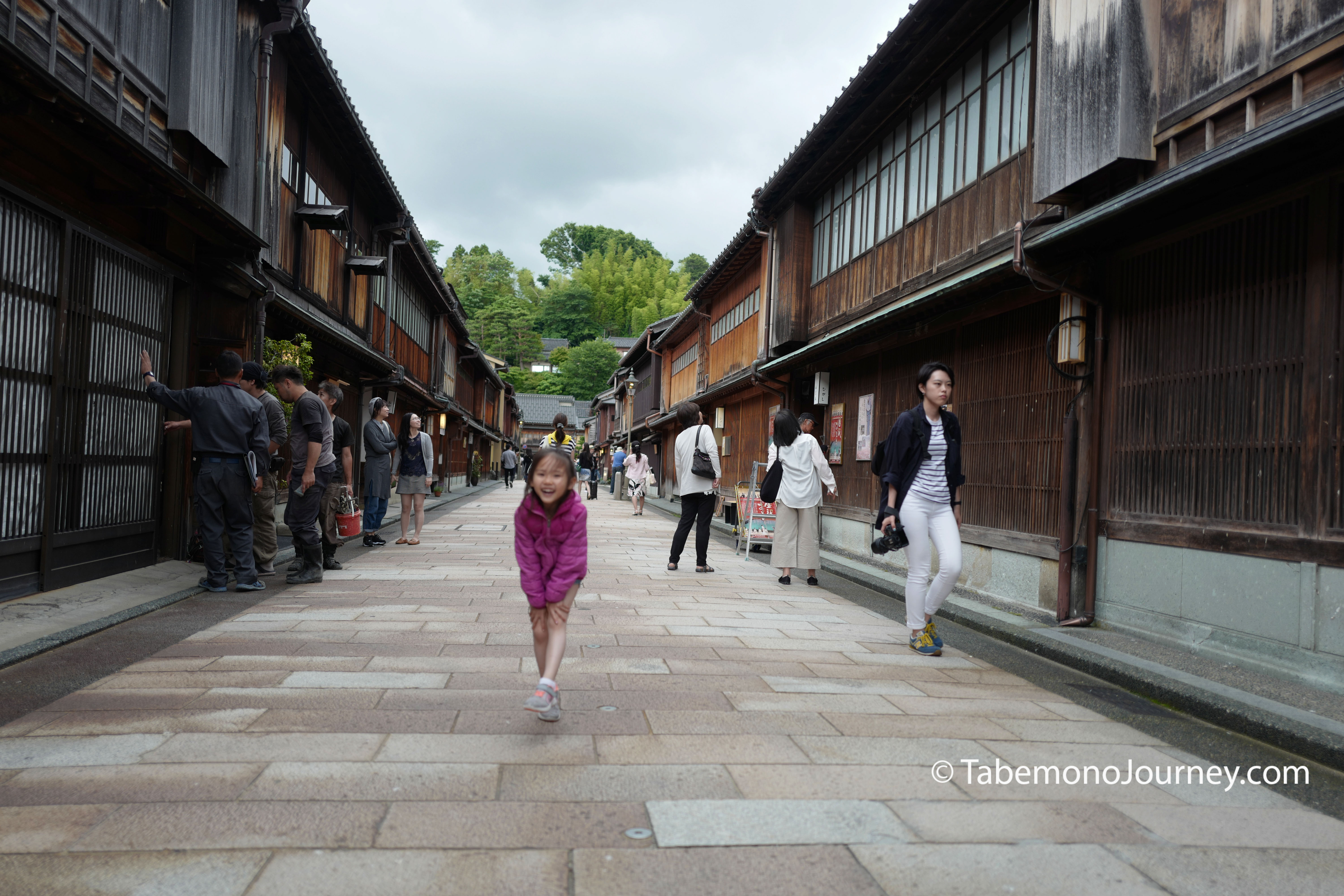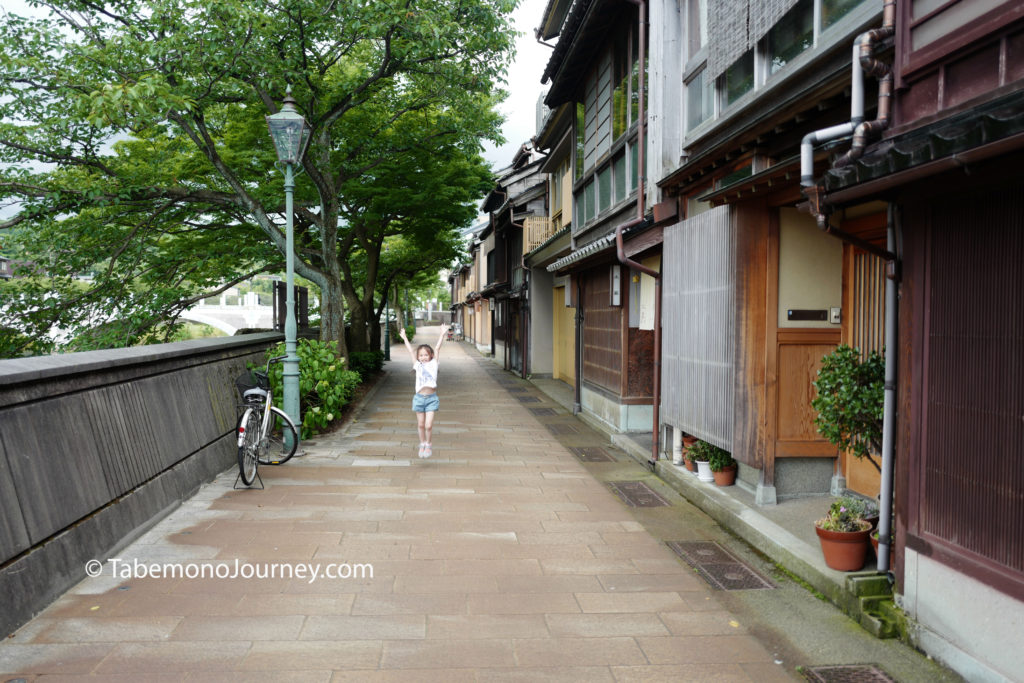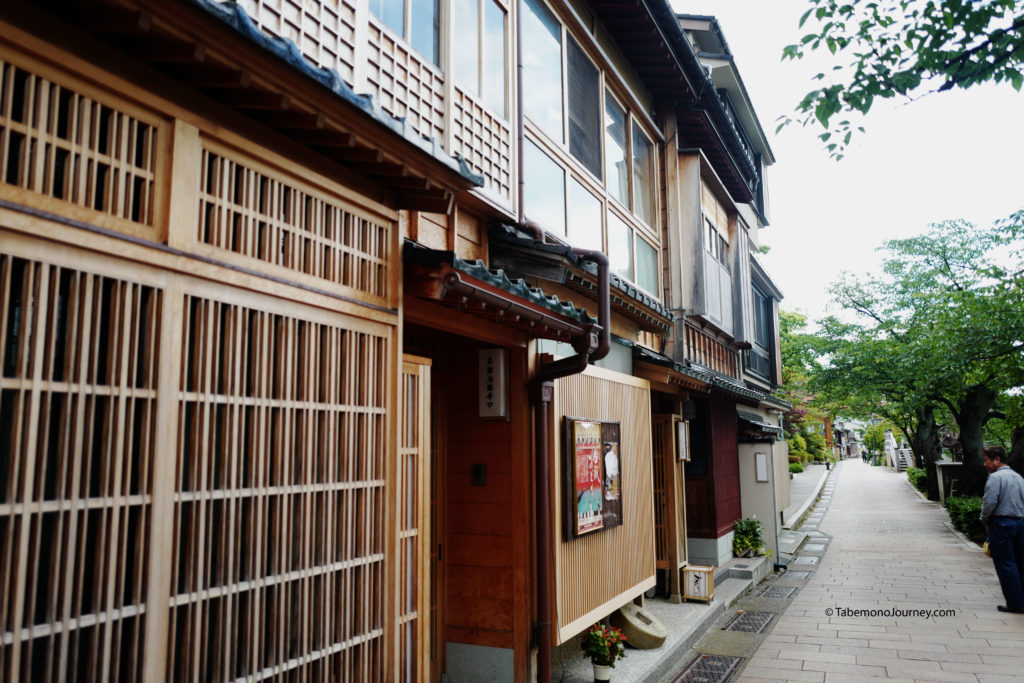After our amazing lunch at an almost 90-year sushi master, we headed back to our hotel to regroup and continue with our sightseeing of Kanazawa. We then headed to Kanazawa Station to catch our bus to head over to the chaya district. In the Edo period, chayas are a type of restaurant, usually tea houses, where guests are entertained by geisha who sing and dance. Kanazawa has several chaya districts with Higashi Chaya being the largest and most preserved from the Edo period. It is very similar to Gion in Kyoto, only not as packed with tourists.
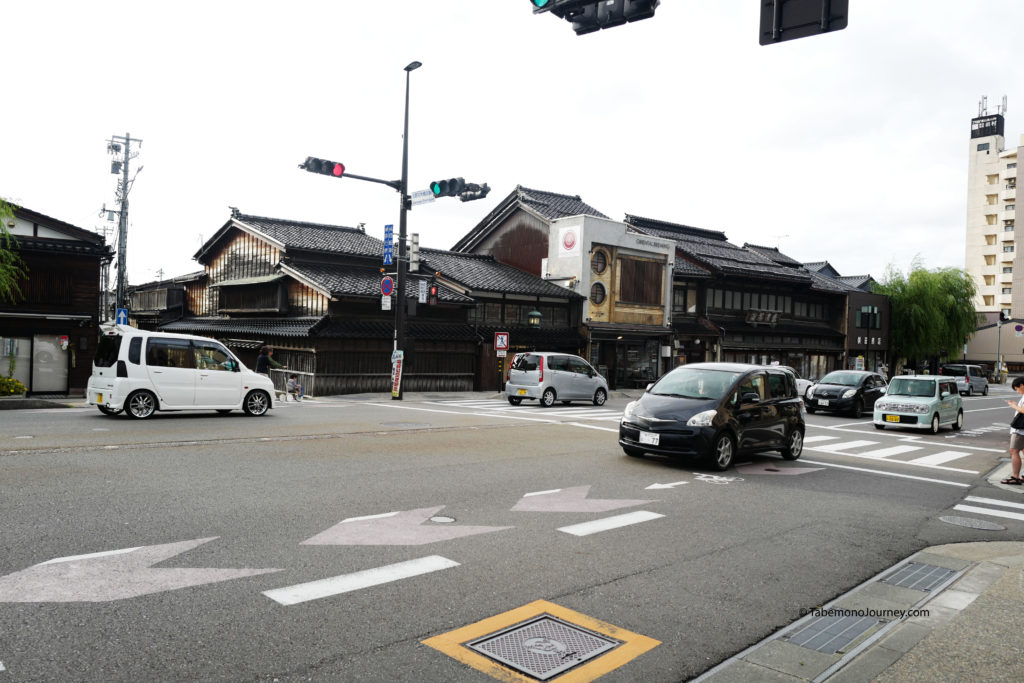
We headed from the Nikko Hotel to Kanazawa Station to take the local bus loop. As mentioned, we have a JR pass which is valid with the JR local bus, but we were also prepared to take the other line not covered by the JR pass. This is mainly to save time as the JR bus schedule is not as frequent as the other local line. The JR line arrived and we got off at our stop on the edge of Higashi Chaya District. As we walked, we struck a conversation with an ex-path from Kansas who fell in love with the city. He introduced himself as Owen and shared that he settled in and married a local. He was kind enough to act as our tour guide of the area.
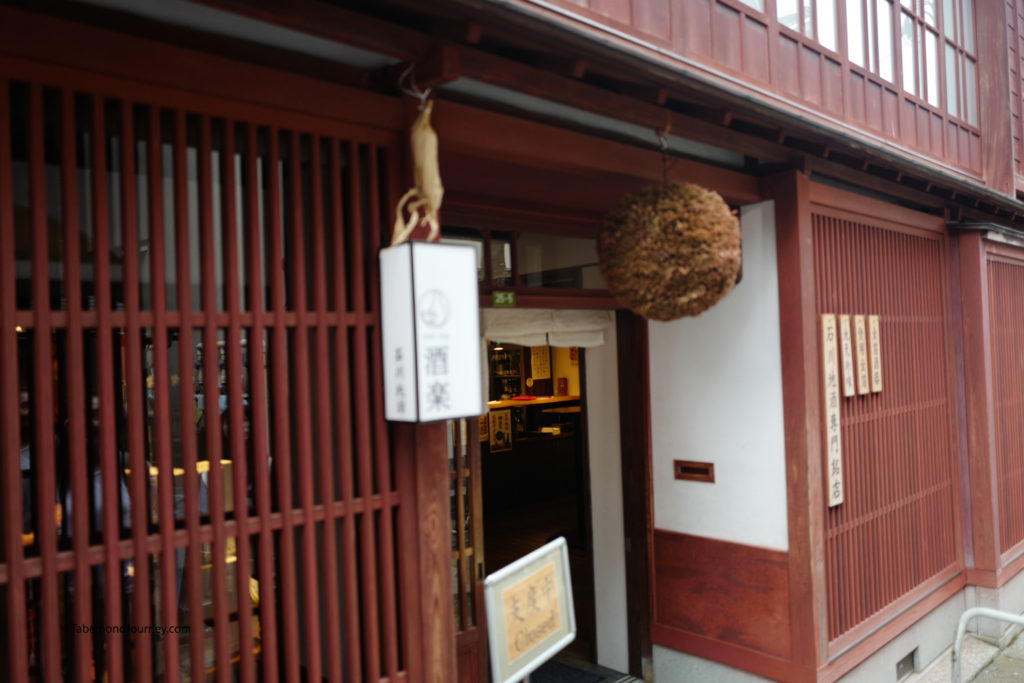
Our guide noted some interesting facts about the various shops in the area. For example, as we walked towards our destination, we came across a nihonshu (sake) shop. Since it was late, the shop was already closed, but our guide noted that the round globe hanging highlights the readiness of the sake. The globe is called sakabayashi and is made from thousands of Japanese cedar needles. The globe starts off green but gradually turns brown, with a timing that is similar to the maturation of the sake. This signals to the community that the sake is ready.
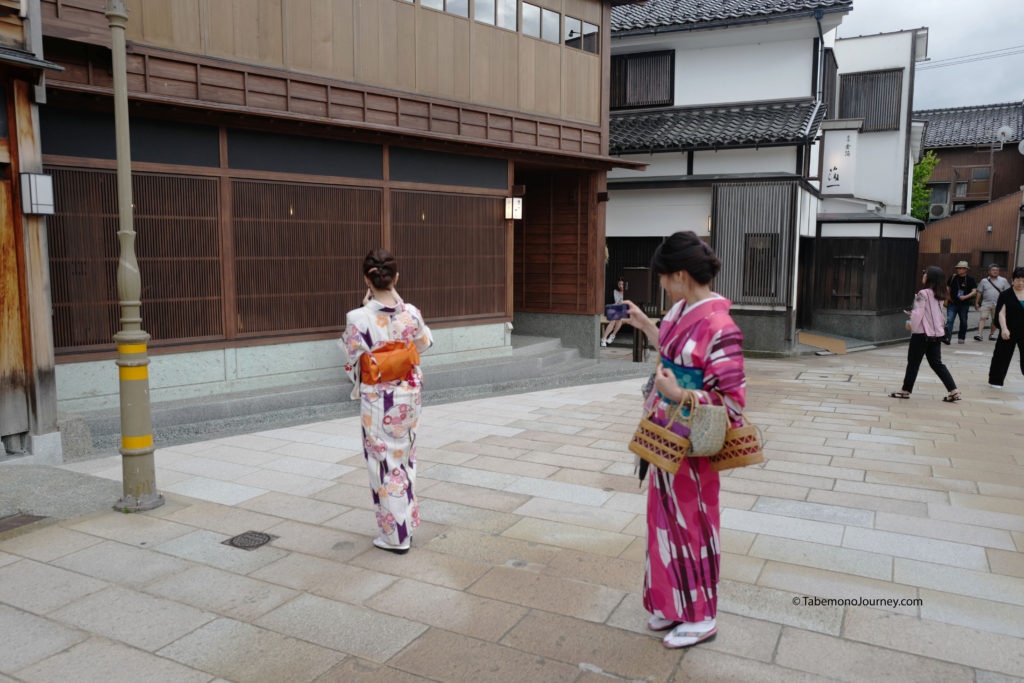
Many areas in Japan have Yukata rentals and are very popular in historic streets such as Higashi Chaya. It allows you to immerse yourself in the atmosphere and culture. We saw a few tourists taking advantage of this attraction to dress up from head to toe and taking pictures.
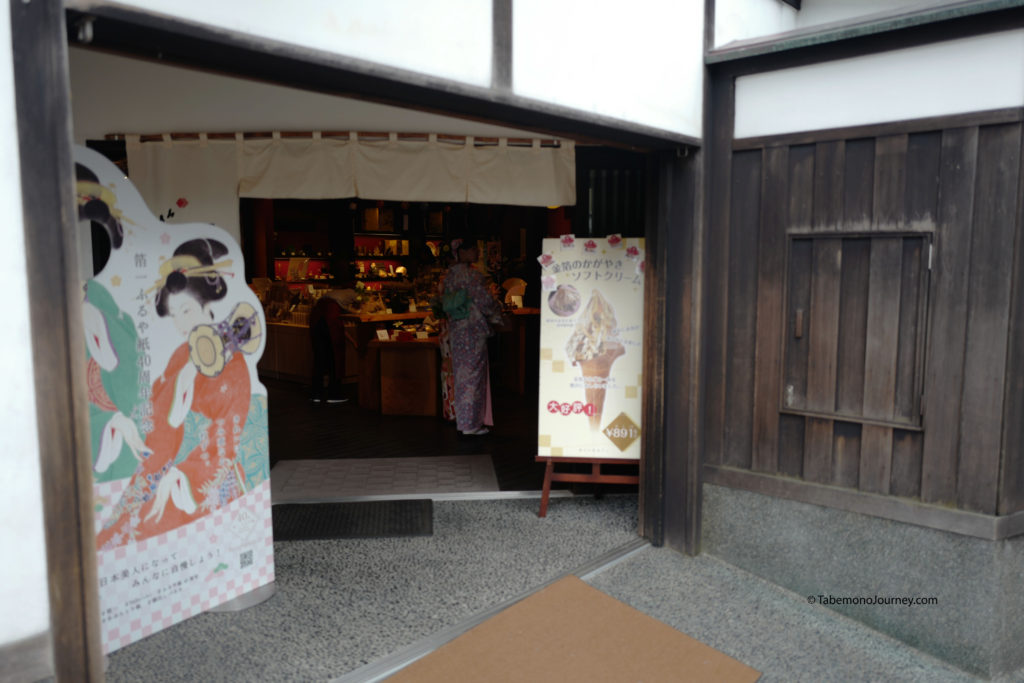
Our first stop our guide took us to was the Hakuichi souvenir shop. It is a store specializing in gold leaf products. The store is open from 9:00 to 18:00, so we were able to go inside and look at the various souvenir.
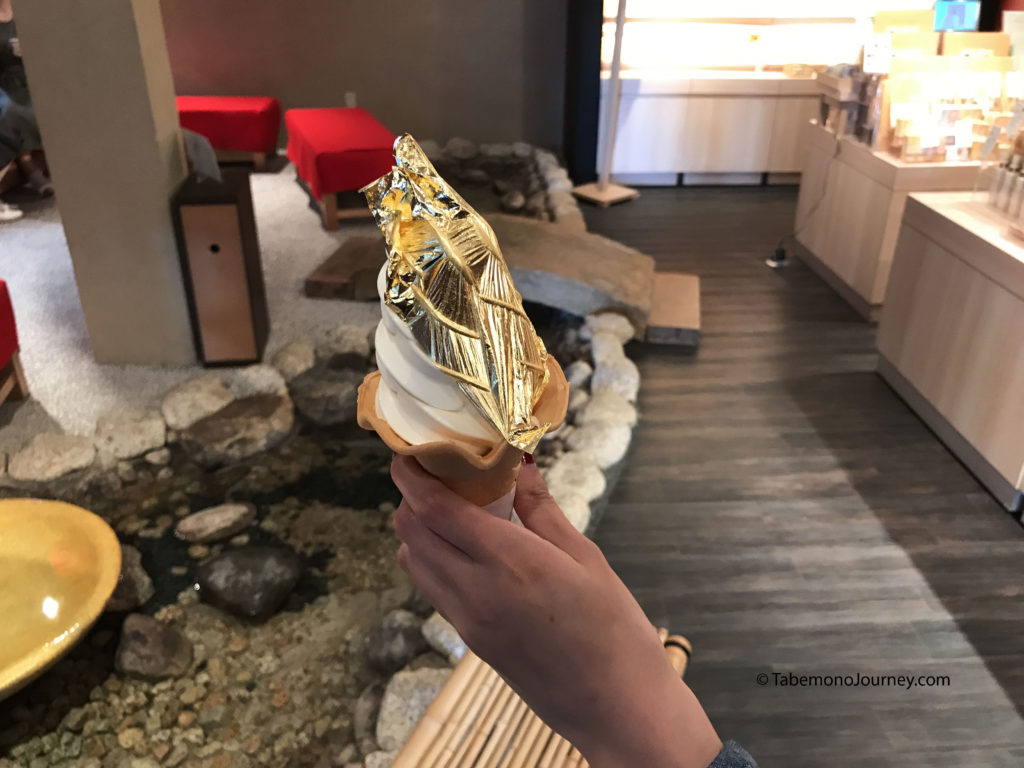
One of the items the famous items at the shop is its soft-serve ice cream coated in a thin gold leaf. The ice cream was tasty but the gold leaf does not have much taste but looks pretty. Our guide shared that Kanazawa is the capital of Japan’s gold leaf craft. The city accounts for 99% of the country’s total production, so you’ll see edible gold leaf in the food throughout the city. Besides getting one for the whole family, we also treated our guide with a soft-serve.
Higashi Chaya-gai means Eastern Teas house District. The area was established in the early 1800s. It is one of the few preserved tea house districts in all of Japan. It is also the largest and most interesting of the three chaya areas in Kanazawa. In the past, the buildings were used by geisha to entertain guests with music, dancing, drinking games, and other activities. Today, many of these buildings are converted to restaurants and craft shops, but there are still two geisha tea houses open to the public for a small fee. Most were closed by the time we arrived, but our guide noted a couple of key ones for future reference:
- Kaikaro is a geisha house still in operation and almost 200 years old. You can visit it from 9:00-17:00 for 750 yen.
- Ochaya Shima is another geisha house and is preserved as a museum. You can see how giesha lived. You can also have green tea and wagashi (sweets). It is open from 9:00-18:00 with an entry fee of 500 yen.
- Kintsuba Nakataya is a sweets shop and sells Japanese confectionery. They are open from 9:00-18:00
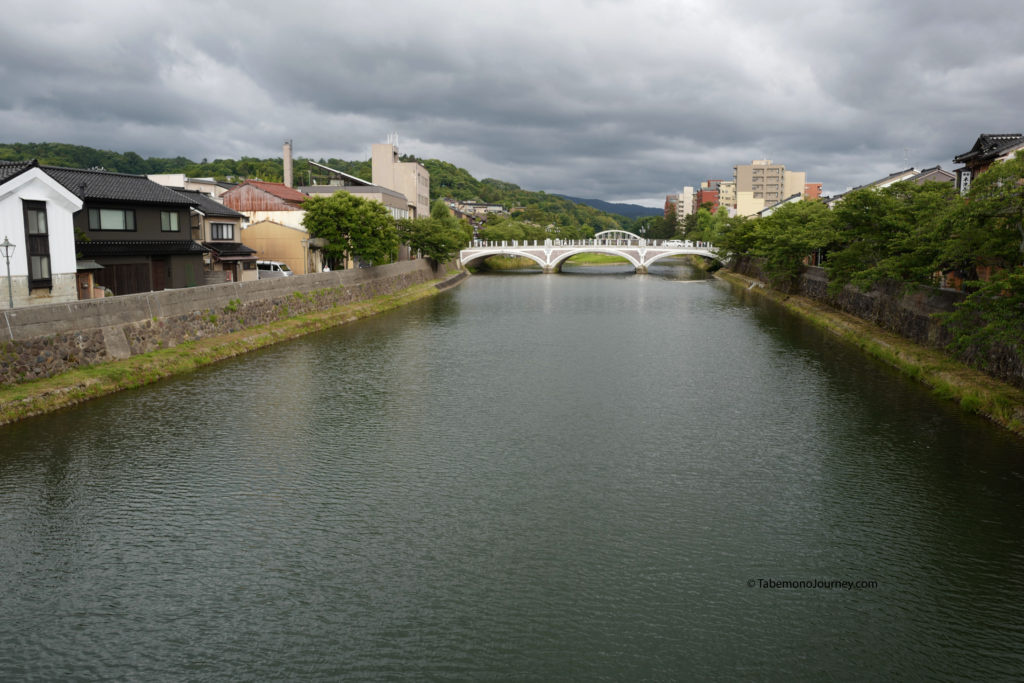
As we walked further out form Higashi Chaya, we came to a bridge that is built over a river. The Asano River runs through the city of Kanazawa. There are a couple of bridges that separate the tea districts. As we crossed the bridge, we made our say to another tea district called Kazue-machi Chaya.
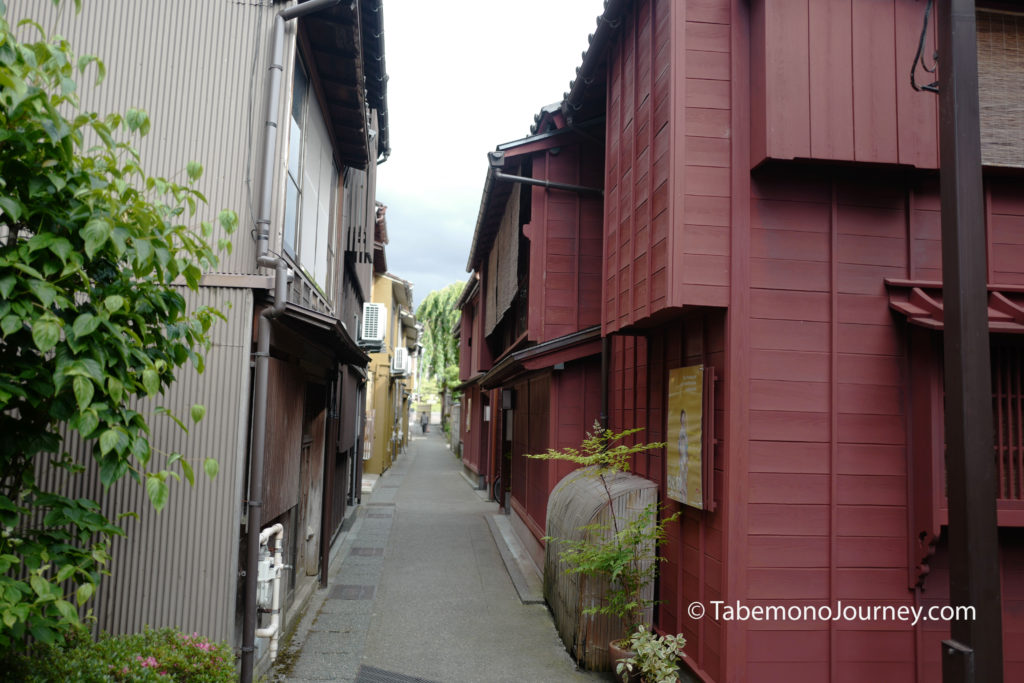
Our guide walked us to an area of Kazue-machi with red buildings. He shared that one of them was a shop called Kanazawa Sushi, where you can have sushi-making lessons. It needs at least one-day advance notice.






Across from the red buildings is a large traditional-looking building. We can hear musical instruments and singing as the maiko learn their art and trade. Our guide also shared that this is where geisha in training, called maiko live.
Kazuemachi Chaya is not as big and picturesque as Higashi Chaya, but given how close they are to each other, it is worth a visit. The rest of the Kazuemachi borders the Asano River and you can find more of the converted tea houses that look like homes as they have little to no signs. They are in fact shops and restaurants that you can visit.
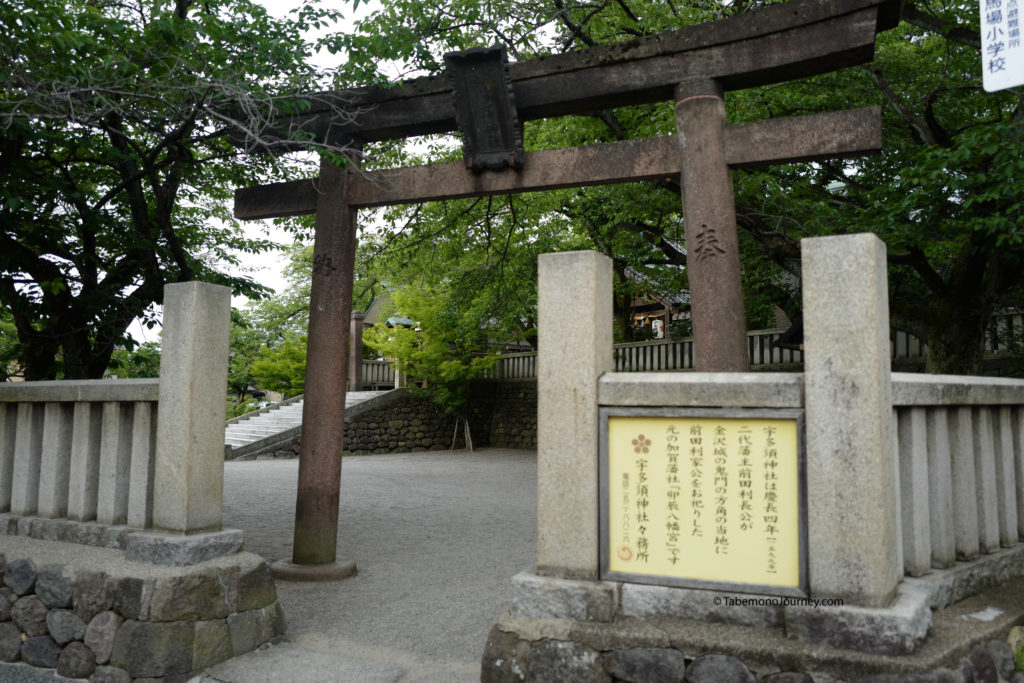
A little further from the Chaya area is the Utatsuyama Temple Area. Our guide shared that it s a district with over 50 temples and shrines. At this point, our guide had to head back to his family. Before leaving, he gave us his business card and shared that he and his wife have several schools opened in the area to teach English. While we probably would have had a great time on our own, having a random encounter provide you with a private tour of the area made it much more enjoyable. After our guide left, we did not explore the temple area as it was getting late. We took the bus back to the JR train station for dinner.
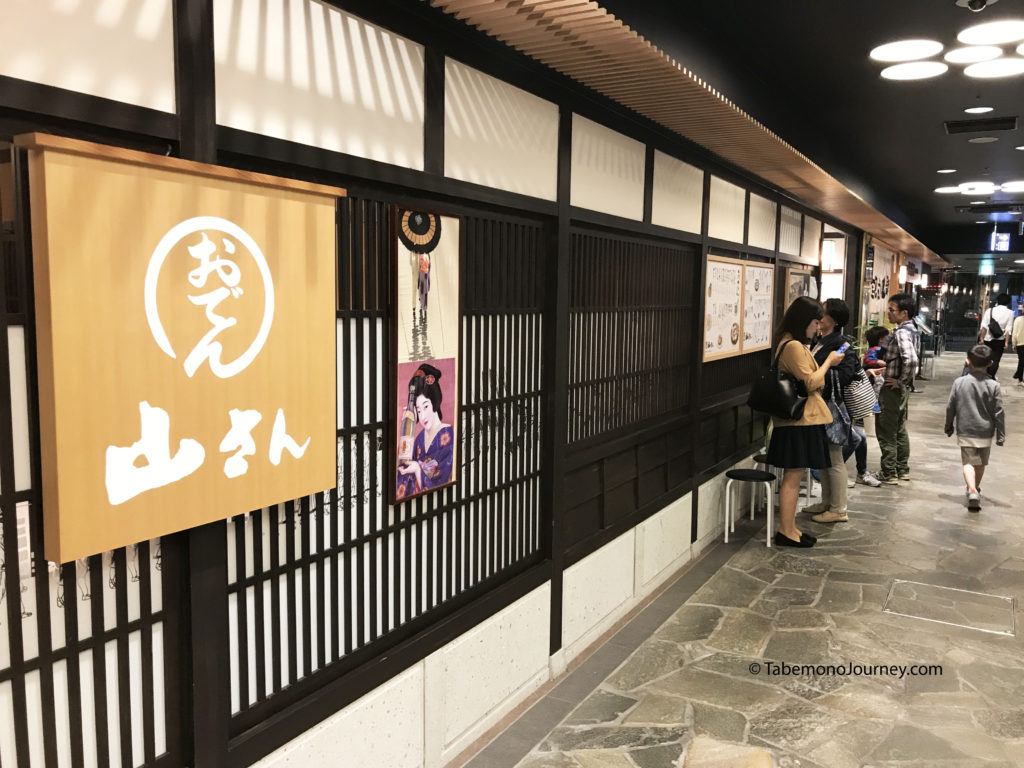
Train stations across Japan are great options for casual eating. There is quite a bit of variety to eat, but I read that there were some nice oden restaurants at the station. We tried to eat at the most famous one in the area called Kuroyuri, but there was a long queue already formed. As a result, we settled for Oden Yamasan that’s right around the corner and they seated us right away.
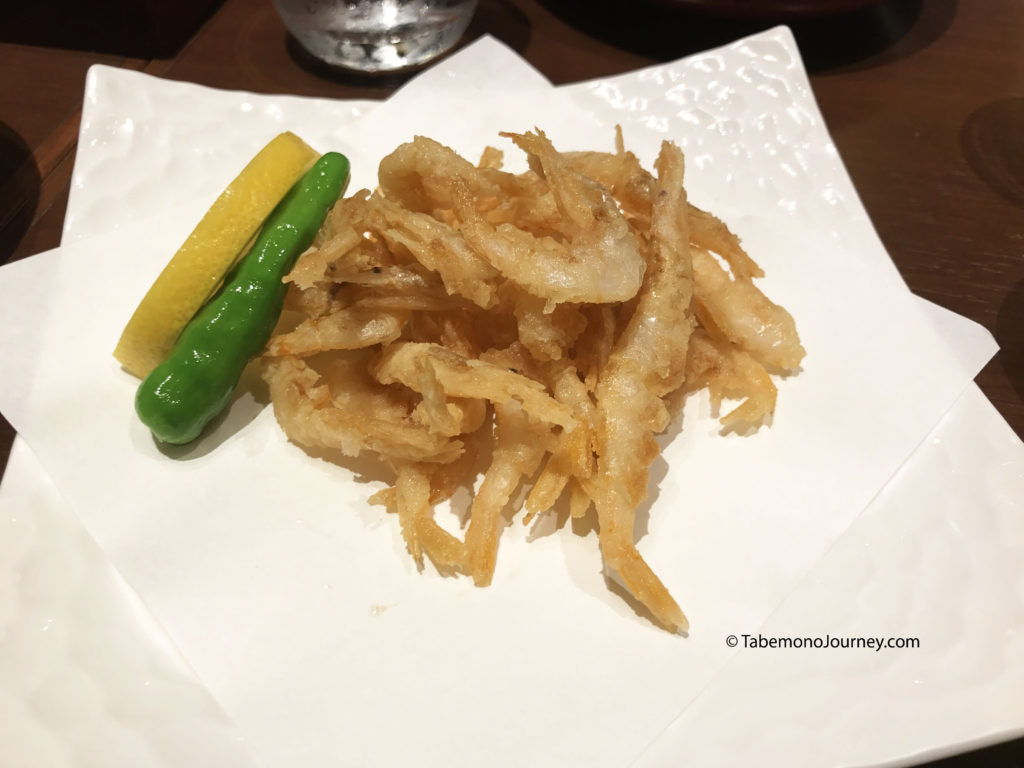
I also saw they had fried shiro ebi on the menu. After eating the version at Itaru Honten, I was looking forward to this dish. While it was good here, the lighter batter and expert frying technique at Itaru Honten was a much better version. I still think about it to this day.






As you can see, besides offering Oden, Yamasan sells izakaya style dishes. We had a variety of small dishes from the menu including:
- saba sashimi (mackerel sashimi)
- hiyashi tofu (cold tofu)
- an amazing version of tamago-yaki with dashi (egg omelette)
- ika sugata (whole grilled squid)
- chicken kaarge
- kawa skewers (chicken skin)
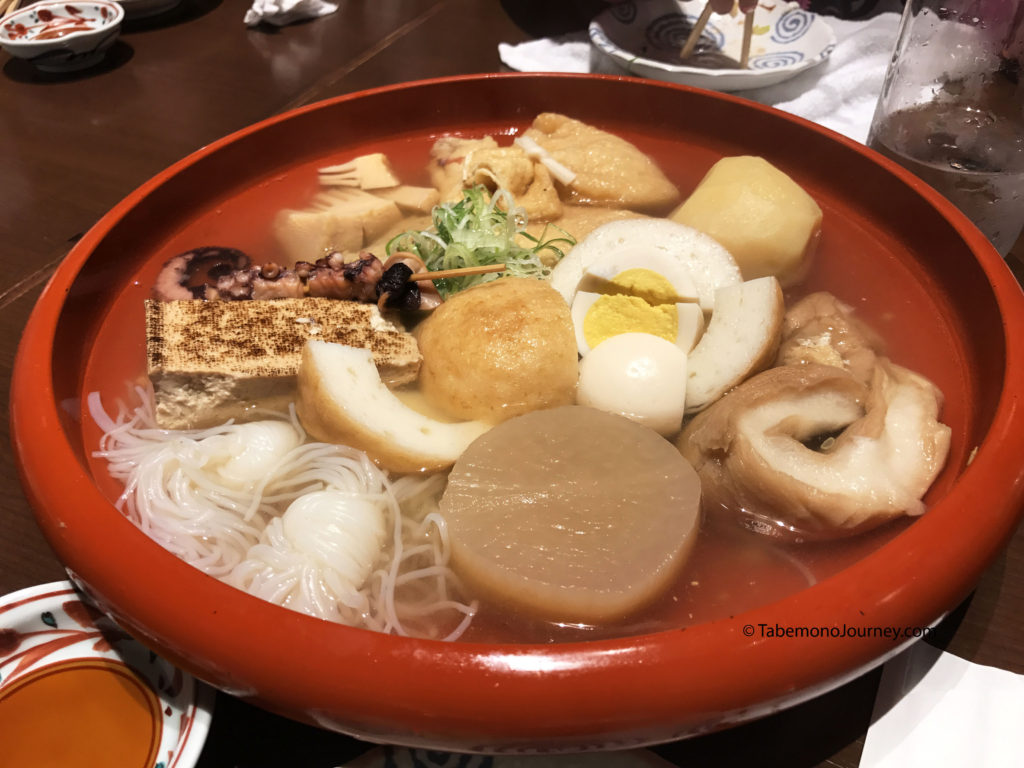
The oden dish came out in a huge bowl. We had oden during a past trip in Osaka. It is a comforting dish with a light and clean broth. It was flavorful and not too salty. My favorite item as the egg wrapped in fish cake. I would not say that oden is a must eat, but it was a comforting dish.
After dinner, we decided to head back to the Chaya area as our guide said that the night scene is amazing, and one of the best he has seen in Japan.





Once we arrived back to the chaya areas, we were left breathless by the amazing views. The area is deserted at night. There is an eerie beauty to the area that is enhanced by the gas-lit lamps. It is a start contrast to the day-time where you see lots of people visiting the areas. It was a nice way to wrap up our visit to Kanazawa.
We only stayed two days in Kanazawa, so we could not see a couple of other key attractions in the city. Some of these attractions included:
- Ninjadera ( also known as Myoryuji Temple 妙立寺), it is a temple equipped with trapped doors
- D.T. Suzuki Museum, a museum devoted to a philosopher, but with an interesting architecture
- Nagamachi, a former samurai district
This just means that we’ll have to come back to Kanazawa. Our next destination will be Toyama.
